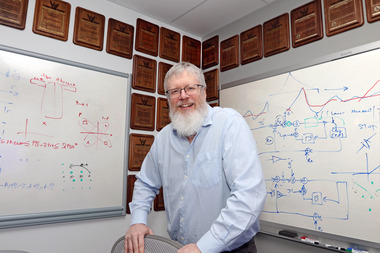WaveLogic 5: Packing a suitcase of ideas into 7nm CMOS
 Saturday, July 13, 2019 at 8:01AM
Saturday, July 13, 2019 at 8:01AM - Ciena’s WaveLogic 5 coherent digital signal processor family comprises the Extreme and Nano chips
- The WaveLogic 5 Extreme maximises optical capacity and transmission reach while the Nano is targeted at compact, power-conservative applications
Advancing coherent optical transmission performance to benefit its platforms; targeting the emerging coherent pluggable market opportunity; selling modules directly, and being more vertically integrated. All these aspects were outlined by Cisco to explain its intention to buy the coherent optical transmission specialist, Acacia Communications; a deal set to be completed in the spring of 2020.
But this also fits the strategy being pursued by Ciena with its next-generation WaveLogic 5 family of coherent DSPs.
 Kim Roberts
Kim Roberts
The WaveLogic 5 continues Ciena’s tradition of issuing a coherent digital signal processor (DSP) family approximately every three years: Ciena announced the WaveLogic 3 in 2012 and the WaveLogic Ai in 2016.
Ciena has managed to maintain its three-yearly cadence despite the increasing sophistication of each generation of coherent DSP. For example, the WaveLogic 5 Extreme will support 800 gigabits-per-wavelength, double Ciena’s WaveLogic Ai that has been shipping for nearly two years.







